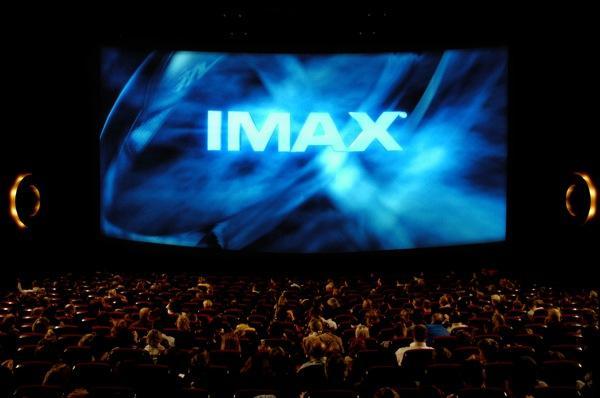IMAX vs XD: IMAX, by definition, refers to any process of making films with the help of projections making any image significantly larger than any standard projected image. IMAX helps provide clarity to an image, focusing on details and increasing sizes and resolutions, providing a better viewing experience.
Check also: All Remote Codes
Table of Contents
Features
- IMAX has a range of huge film stocks, cameras as well as projectors
- The system comes with heavier cameras producing a lot of noise, more than any previous camera model.
- IMAX is capable of producing a large number of stories.
- 12K resolution is one of the main features of IMAX, providing a better viewing experience.
- Films are allowed to run horizontally instead of vertically like other cameras.
Advantages
- IMAX theatres are dome-shaped, with huge screens covering almost the entire hall of the theatre, helping with a better view of the screens.
- IMAX film formats are nearly 15/70mm compared to 35mm or 60mm on regular screens. Film sizes increase by almost ten times in these film formats.
- IMAX has been able to patent 12.1 channels of 15000-watt digital speakers with wide frequency responses. The geometry of theatres adds to the sound and viewing experience.
- IMAX theatres use laser lights that are highly powered. This helps to provide twin digital projectors with 4k proprietary.
- IMAX makes screens larger and films longer, making them more detailed than any other traditional technology of film projections.
- Digital Remastering adds to already powerful films providing a quality viewer experience.
Disadvantages
- IMAX screens are bigger, leading to a fall in video quality. Despite having an impressive ratio of 1:90:1, IMAX is still far away from technology like Dolby Cinema.
- IMAX, to this date, is equipped only with 12 audio channels. This reduces audio quality for IMAX screening compared to technology like Dolby Cinema.
XD
XD or Extreme Digital Cinema refers to screens that are extra-large and attached from one wall to another, providing screens that can provide an immersive experience more than any other screens.
Features:
- XD theatres used to feature 7.1 surround sound, although major XD theatres upgraded to 11.1-enabled surround sound.
- Xd offers a color variety consisting of more than 35 million colors.
- XD cinema has luxury seating facilities.
- One bass subwoofer, along with 11 speakers, will be able to offer an immersive sound quality.
- The screens offer 4k projection facilitating 3d facilities
- XD theatres are all certified by THX, offering a standardized visual and audio experience.
- XD theatres are characterized mainly by premium seating facilities.
Advantages
- The quality of the image is better as compared to traditional movie theatres.
- The colors are vibrant as compared to any other device
- .
- The quality of sound is also better, significantly offering viewers a more realistic and exciting experience.
- XD cinema can provide bigger social experiences compared to any traditional movie theatre. One lobby is provided where people can meet after and before any movie.
- Watching movies are affordable as compared to any other movie theatre. Discounts are available for XD users compared to premium charges taken by movie theatres.
- Digital projection can provide a much more realistic, clear, and colorful image to moviegoers.
- Seating in stadiums provides seats with similar levels, helping to better view the screen from any corner of the theatre.
- Recliner seats can offer extra legroom, making it a great option for people wishing for a more relaxing experience.
- XD theatres are less crowded than any other movie theatres, making it easier to find seats and avoid long restroom lines.
Disadvantages:
- Sound can be overwhelming or too loud for someone.
- XD theatres are not always correct in claims of benefits promised. For example – 11.1 surround sound cannot provide any viewing experience as promised.
- 11.1 surround sound is marketing hype, as promised. This is because Dolby theatres are able to provide a better immersive sound experience.
- XD is unable to use enough film print as compared to any other digital medium.
Comparison of IMAX and XD
| Parameters |
IMAX |
XD |
| Format | This technology is only able to play movies made exclusively for IMAX | The technology is able to play any film format, including IMAX |
| Size of screen | The ideal IMAX screen can also be 70 feet as well as above. Although LIE-IMAX is generally 50 feet tall, approximately | 70 Feet-tall screens are available, stretching from roof to floor. |
| Projectors | New IMAX operates using 4k dual laser projectors, although a few old ones can still use 2k projectors. | The technology uses a projector of 4k laser. |
| Sound | The technology uses 12 channels surrounding sound. | The technology uses 11.1 channels surrounded by sound |
| Comfort of seat | Padded seats can be adjustable at heights. | Leather seats that are spacious use headrests, recliners, and a footrest. |
XD has a lot of things in common with IMAX. However, XD can offer a better experience as theatres can offer superior comfort of the seat as well as clarity of the screen and 35 trillion types of colors. Moreover, this technology can view any film compared to IMAX technology, which is only useful for movies. IMAX, On the other hand, can provide a much better sound experience. CD theatres are more expensive to be used as compared to IMAX technology.
XD theatres are able to provide a much better 3d experience. IMAX theatres are not provided with screen sizes as large as XD, as the aspect ratio is around 1.43:1 or 1.90:1. 70mm film format covers a larger area than any format. The brightness of IMAX theatres is much better compared to any other kind. Therefore, judging by all aspects of both XD and IMAX technologies, it is safe to say – XD is better holistically, although IMAX theatres perform well in terms of brightness.

Virat Raj is a Digital Marketing Practitioner & International Keynote Speaker currently living a digital nomad lifestyle. During his more than 10 years-long expertise in digital marketing, Virat Raj has been a marketing consultant, trainer, speaker, and author of “Learn Everyday yourself: In Pursuit of Learning” which has sold over 10,000 copies, worldwide.

